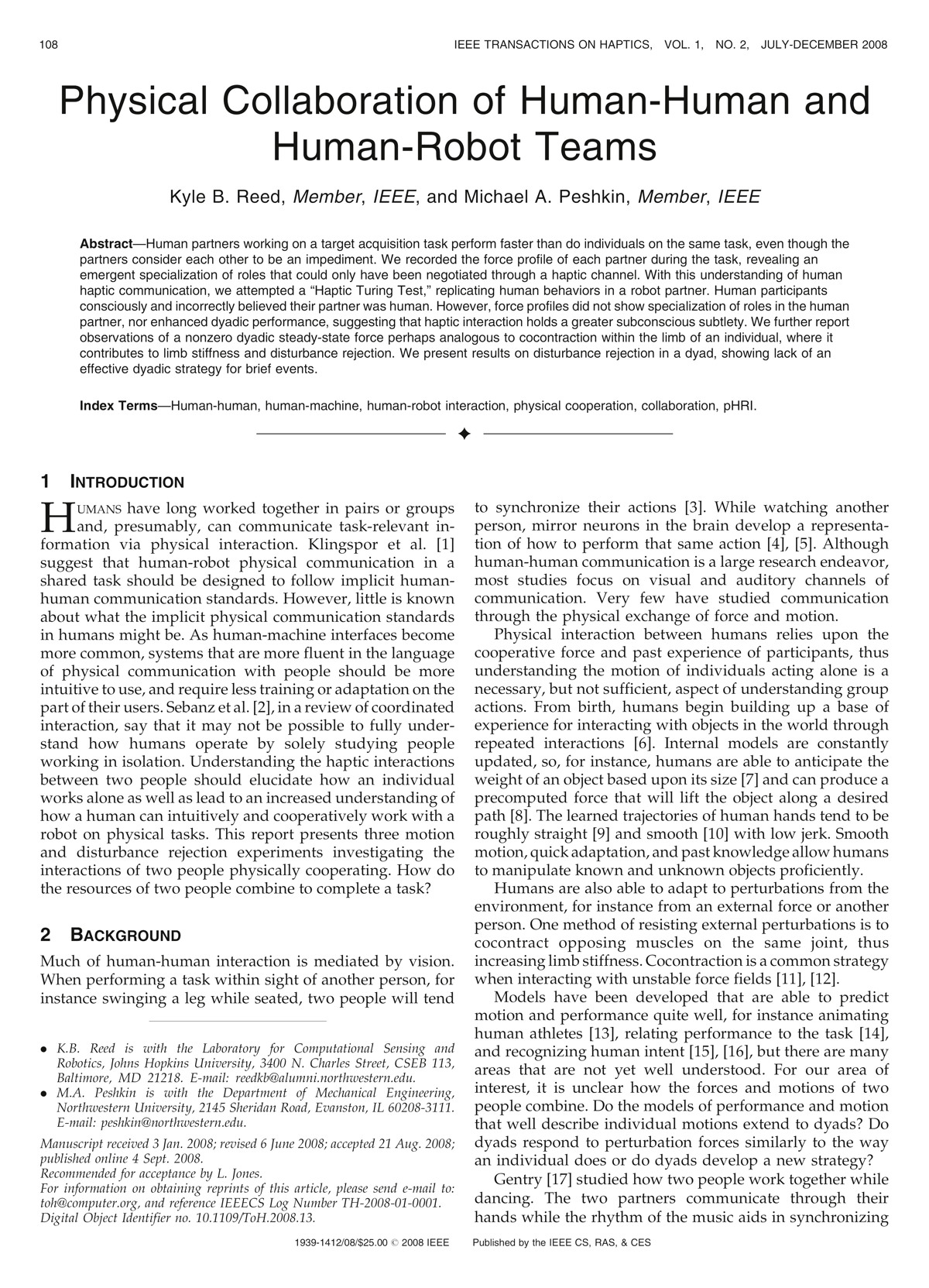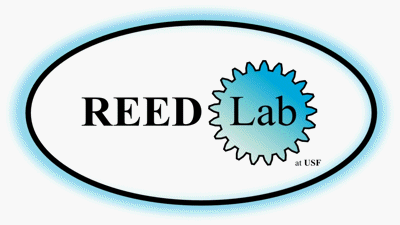|
|
Physical Collaboration of Human-Human and Human-Robot Teams
Abstract - Human partners working on a target acquisition task perform faster than do individuals on the same task, even though the partners consider each other to be an impediment. We recorded the force profile of each partner during the task, revealing an emergent specialization of roles that could only have been negotiated through a haptic channel. With this understanding of human haptic communication, we attempted a “Haptic Turing Test,” replicating human behaviors in a robot partner. Human participants consciously and incorrectly believed their partner was human. However, force profiles did not show specialization of roles in the human partner, nor enhanced dyadic performance, suggesting that haptic interaction holds a greater subconscious subtlety. We further report observations of a nonzero dyadic steady-state force perhaps analogous to cocontraction within the limb of an individual, where it contributes to limb stiffness and disturbance rejection. We present results on disturbance rejection in a dyad, showing lack of an effective dyadic strategy for brief events.
[ download pdf ]

|





